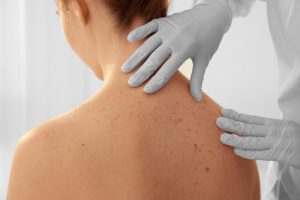Your skin, the largest organ of your body, works hard to protect you from disease-causing viruses and bacteria, hazardous particles that come with the air, and harsh environmental elements such as the hot rays of the sun, the chill of snow, and bugs and critters that fly around you.
That is why, it is no surprise that, over time, your skin starts to show signs of wear.
As you grow older, your skin matures, too. You will notice that your skin is dry and loose. Back in the day, you may have oily and plump skin. Now, there are lines all over your face.
The issues that many women over the age of 50 experience are normal and, often, are not a cause of concern. They do, however, become a source of insecurity among older adults, especially women.
Addressing the common skin problems that come with aging could bring confidence back among folks 50 and older.
Hyperpigmentation
Revlite is a non-invasive treatment that involves blasting laser onto the area of concern to remove the melanin, which is responsible for dark pigment. As a result, your skin will retain its original tone.
The treatment is perfect for women and men who have age spots, also known as sunspots or liver spots. They usually appear on the face, hands, shoulders, and arms. These small, flat, dark marks are common among people age 50 and above although young people can get them, too.
You get age spots from extended sun exposure. Most of the time, they do mot develop into cancer or other serious illnesses.
The topical application of retinoids, specifically tretinoin, may also fade age spots, too. However, you may want to check with a dermatologist for a prescription and how to properly use the product to prevent your skin from becoming too dry and irritated.
Products that contain glycolic acid, which is a chemical exfoliator, may give you favorable results. However, considering that the ingredient has been diluted, it may take time before you see your age spots lighten.
In addition, to prevent age spots from appearing, use sunscreen daily.
Cherry Angiomas
Typically, moles are either black or brown. However, as you reach your 30s, 40s, and beyond, you may start to see moles that are bright red.
These are cherry angiomas, also called senile angiomas or Campbell de Morgan (named after an English surgeon) spots. What causes it remains unknown, but some people are more likely to get it than others due to genetics. It has also been previously linked to pregnancy.
Cherry angiomas, like age spots, are normal and do not need to be removed. However, for cosmetic purposes, treatments are available to get rid of them.
Electrocauterization is a surgical treatment that uses electric current to burn the spots. Cryosurgery, on the other hand, freezes the spot with liquid nitrogen to destroy it. Shave excision involves cutting the spot off of the skin.
There is no way to prevent it.
Sun Spots

In addition to brown and red spots, as you age, you may also start to notice white spots on your skin. People with lighter skin tones often get them in addition to age spots due to sun exposure.
Scientifically, it is called idiopathic guttate hypomelanosis, but people refer to them as sunspots. They appear in areas of the body that gets the most amount of daylight, including the face, arms, and legs.
Often, they do not lead to serious illnesses.
They are more challenging to remove compared to age spots and cherry angiomas. You can remove melanin from portions from the skin, but adding it back when you have lost it is not feasible. You can try to talk to a dermatologist about possible treatments that may minimize their appearance.
Tags
Skin tags also occur as you age. These overgrowths are created when there is a buildup of collagen. They may appear on your groin, under the arms, etc. — areas where skin rubs together. People with type-2 diabetes may also get skin tags.
Removing skin tags is easy. You can undergo cryosurgery to get rid of them. You can also ask your dermatologist to cut them off completely.
Solving these skin problems would not entirely help an older adult gain their confidence back, but it might help them look at their bodies, as they go through changes, in a more positive light. In addition to cosmetic treatments, exercise, eating a balanced diet, and having a loving support system can improve people’s self-esteem as they age.

